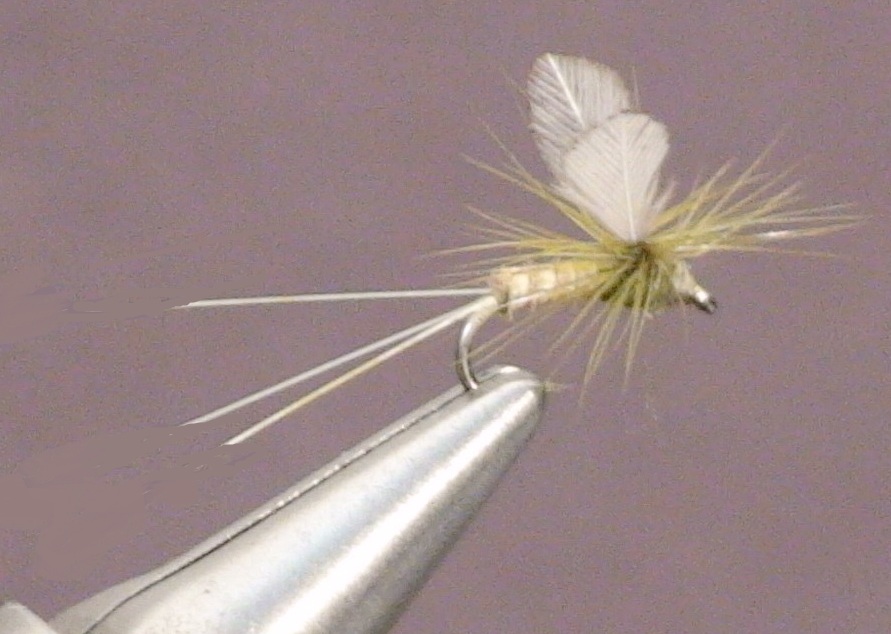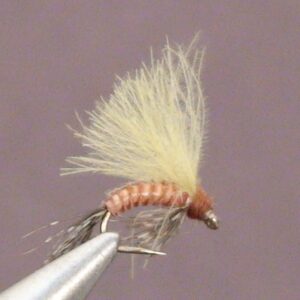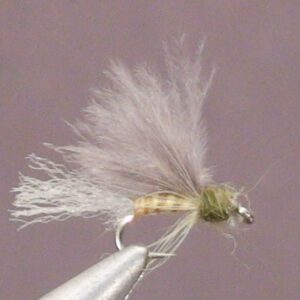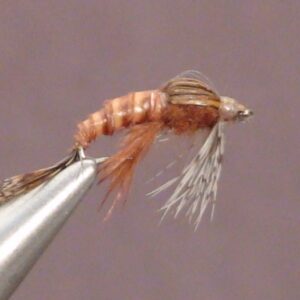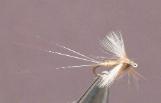Hook Size: 16/18
The Perfect Fly Pale Morning Dun Dun is an excellent imitation of the adult stage of life of the mayfly. It imitates the mayfly as it drifts or floats on the surface, drying it wet wings enough to fly off the water onto the banks, bushes or trees where it will eventually change into the spinner stage of life. It even imitates the dun down to two or three tails and it two upright wings. It is fished on the surface as a dry fly. It should be treated with floatant.
It’s not uncommon for the fully emerged duns to drift a quite a long time on the surface
before flying away to nearby trees, grass or bushes. This is especially true during the
first part of the hatch when the water is still fairly cold. We consider a long time to be a
minute or two versus a few seconds. Cripples or duns that are deformed are common
with this hatch. The cripples will stay on the surface much longer, of course.
These mayflies won’t emerge in fast water or strong moderate currents. They will move to
the nearest slower moving water to emerge. In pocket water steams this is usually the
pockets behind boulders and pockets along the banks of the stream. It can also be the
tailouts of pools and slower moving water in the flat areas of streams.
In moderate to fast smooth flowing water, they will move out of the strongest currents to
slower water along the banks and any area of the stream where the current isn’t as
strong. The smooth flowing water can make it more difficult to get the fly to the trout in
some cases.
Presentation:
A down-stream or cross-stream presentation will usually spook less fish although you
can fish pockets of calm water with an upstream presentation in certain waters. We fish
upstream, or slightly up and across anytime we can do so without spooking fish. This is
always the best way in streams with fast moving pocket water. Of course you will be
presenting the Pale Morning Dun imitation in the calmer areas described about and it
isn’t always easy to get a drag free drift. It’s best to make short cast and keep all the fly
line off of the water you can to prevent drag.
In slower moving, slick or smooth water, you may need to fish down and across. It there
are not a lot of fish rising to the emerging duns, then you may evem need to fish to
individual fish. This is a matter of getting your fly to drift over the fish at the right time. In
smooth, slick water, this is not exactly easy to do without spooking the fish.
During the months of July and August, when the PMD hatches are occurring on some of
the colder streams in the Rock Mountains, you may make the mistake of starting to fish
too late in the day. The hatches generally take place earlier during the hottest days of
the season. You may need to be on the stream fishing by 9:00 o’clock in the morning
which many anglers consider early, especially if they fished late the day before. The
hatch may be over by 10:30 to 11:00 am.
Copyright James Marsh 2013
